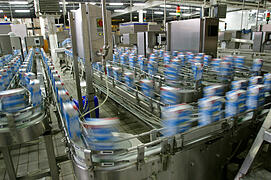SAP Business One is equipped with 4 Bill of Materials types so you can get products from start to finish faster than other solutions. Here's how.
 From purchasing, manufacturing, assembling, and ultimately selling products, keeping track of the entire production process stage-by-stage can be a challenge. Many small to midsized enterprises (SMEs) that use enterprise resource planning (ERP) applications, like SAP Business One, have found that having Bill of Materials (BOM) at their disposal can help them overcome these common production related challenges; making the overall production process much more efficient, accurate, and timely.
From purchasing, manufacturing, assembling, and ultimately selling products, keeping track of the entire production process stage-by-stage can be a challenge. Many small to midsized enterprises (SMEs) that use enterprise resource planning (ERP) applications, like SAP Business One, have found that having Bill of Materials (BOM) at their disposal can help them overcome these common production related challenges; making the overall production process much more efficient, accurate, and timely.
For many companies, the production process starts with raw materials and the creation of a production order which contains all of the materials and steps required to produce an item within a predefined time frame. The materials required for a production order can be found in the BOM generated by SAP Business One. The BOM contains a hierarchical arrangement of components that lists all of the raw materials and child or sub items required to assemble and produce a finished product.
Without an integrated ERP solution, the generation of BOM and the overall production process is much more complex and error prone due to the challenges associated with manual processes and in-house legacy systems. These challenges include things like managing of inventory across multiple warehouse locations; tracking and recording inventory movements; ensuring enough raw material and parts are created and ordered at the time of production; calculating shortages or surplus inventory; and access to real-time information.
In order to get the most out of the 4 different BOM types in SAP Business One, they must first be explained. Here are 4 BOM types that can be generated using SAP Business One:
1) Production BOM: For all Materials Requirements Planning (MRP) runs and standard production orders, a Production BOM is required. The Production BOM lists parent items which are finished products and the child items are components which complement the parent item. During the production process you can turn components into finished products.
2) Sales BOM: A Sales BOM is used for sales documents where the parent item is listed only as a sales item, not an inventory item. Once the parent is selected in the sales document all of the children appear as sub-items. You can update the quantities of the parent or children, but you cannot delete children or add new children or sub-items to the package in the sales document. An example of this would be a computer printer and its components where the parent would be the package or sales item and the children would be the inventory items inside the package.
3) Assembly BOM: An Assembly BOM is similar to the Sales BOM as it represents a collection of individual items in a set with a specific price. Much the same with the Sales BOM, you do not manage the final product as an inventory item, but rather as a sales item. But, unlike the Sales BOM, only the finished product appears in the sales document, the components do not appear as sub-items.
4) Template BOM: A Template BOM has no real restrictions and is flexible; the parent and child can be any type of item. This type of BOM can be used in both production and sales documents with the parent item displaying first with components listed below it. These components can be swapped out and replaced with other components, deleted from the BOM and sales document and the quantities can be updated.


